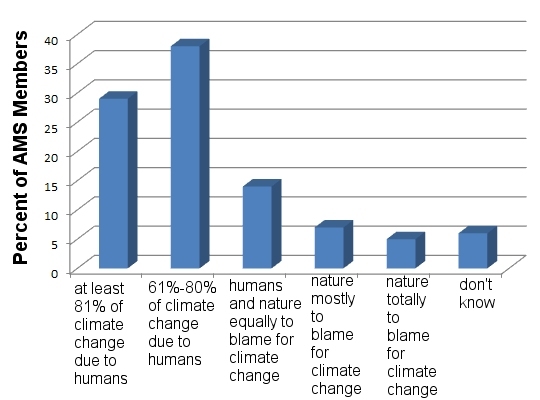Jay L. Wile's Blog, page 40
April 18, 2016
Bill Nye Couldn’t Be More Wrong!

Me with a family whose eldest is about to finish an MD/PhD program.
I have probably harped on Bill Nye’s errors far too much (see here, here, here, here, here, here, and here). Partly, this is because he continues to make them, when even a small amount of self-education would fix that problem. Partly, it is because some of his errors are so incredibly egregious. This post is a result of the latter situation. In his error-riddled book, Undeniable, Nye makes the following statement:1
Inherent in this rejection of evolution is the idea that your curiosity about the world is misplaced and your common sense is wrong. This attack on reason is an attack on all of us. Children who accept this ludicrous perspective will find themselves opposed to progress. They will become society’s burdens rather than its producers, a prospect that I find very troubling. Not only that, these kids will never feel the joy of discovery that science brings. They will have to suppress the basic human curiosity that leads to asking questions, exploring the world around them, and making discoveries. They will miss out on countless exciting adventures. We’re robbing them of basic knowledge about their world and the joy that comes with it. It breaks my heart. (emphasis mine)
This is one of the most egregiously false things that Mr. Nye has claimed, and that’s saying a lot, given that it took me twelve pages to detail all of the errors I found in his book. I want to give you some idea of how egregiously wrong that statement is by just highlighting a few people I have met over the past six weeks.
Let’s start with the family pictured with me at the top of this post. The woman in the picture is a homeschooling mother. She has two young ones with her, but she wanted to tell me about her eldest son, who is in the fifth year of his MD/PhD program. Why is he getting two advanced degrees? Because he wants to do cancer research. To treat patients, you typically need an MD. Being trained to do original research typically involves getting a PhD. Thus, those who want to do original research in medicine often get both an MD and a PhD so they have all of the relevant training they need.
This mother’s son demonstrates in no uncertain terms how wrong Bill Nye is. I met her in Peoria, Illinois this past Friday, when I spoke at the APACHE homeschool convention. She came up to me at my publisher’s booth and told me that her son had asked her to inform me of two things: First, my science courses encouraged him to pursue medical research as a career. Second, they helped him excel at university so he could get accepted into medical school.
I am not telling you this to “toot my own horn,” even though a former pastor of mine says I play that particular instrument very well.* I am telling you this because my courses are young-earth creationist courses, and this mother gave her son a young-earth creationist education. Far from suppressing “the basic human curiosity that leads to asking questions,” this young man’s creationist education encouraged him to continue to ask questions, explore the world around him, and make discoveries. He has, most certainly, already felt “the joy of discovery that science brings.” Indeed, I suspect he will be experiencing that joy for the rest of his career.
Now, if this justifiably-proud mother were the only person I met recently who demonstrated Mr. Nye to be wrong, I probably wouldn’t have posted about her and her son. However, the Lord has led several such people to me recently, and I want to introduce a few of them to you!
This young lady came up to me after I finished a talk at the Great Homeschool Convention in Ft. Worth, Texas:

She is currently in her senior year of high school and wanted to tell me that my young-earth creationist courses had encouraged her to study medicine. Why? Because she loved seeing the hand of God in the design of the human body and the biological world in general! My young-earth creationist courses had actually made her more curious about the human body. This is in stark contrast to Mr. Nye’s claim that those who are taught creationism will have to “suppress the basic human curiosity that leads to asking questions, exploring the world around them, and making discoveries.”
In fact, curiosity seems to be a trait that young-earth creationism inspires. Consider, for example, the amazing young lady on my immediate left in this picture:

She and her sister came up to me at my publisher’s booth when I was speaking at the Great Homeschool Convention in Cincinnati, Ohio. At the ripe old age of 18, she has already earned her college degree in natural science. She plans to pursue an advanced degree so she can do scientific research. Can Mr. Nye tell me how she going to “miss out on countless exciting adventures” when she has such a head start at studying the natural world? Please note that her sister is following in her footsteps, already working on a college degree of her own at the ripe old age of 17.
Next, meet a high school student who literally ran up to me while I was at the Greater St. Louis Home Educators Expo and told me that physics is AWESOME.

At the beginning of the school year, she had no idea that she would enjoy physics so much, but the more she studied my young-earth creationist physics course, the more she loved it. She said that she was just amazed at how God put the physical laws together so that everything worked so well. She doesn’t know exactly what she wants to study in college yet, but she figures it will be physics-related.
Speaking of physics, this person demonstrates how science and homeschooling can often work hand-in-hand to produce people who want to study science.

She was another person I met at the APACHE homeschool convention. She is an engineer who currently works for CAT and is pursuing a master’s degree in mechanical engineering. Mr. Nye has a BS in mechanical engineering, so this woman already has more formal education than he does in his chosen field of study.
Interestingly enough, when she was in high school, she had no desire to physics, which is (of course) the basis of her field. However, her brother wanted to study it, and she agreed to study it with him, just to help him pursue his interest. After helping him work through my physics course, she was hooked! As I said, this shows how a young-earth creationist education, combined with homeschooling, can inspire a student to go into a science-related field. Had she not been homeschooled, she would never have taken physics. However, because she was willing to be a helpful homeschooling sister, a life-long interest was sparked.
I will end with one more picture:

My publisher and I had the pleasure of spending an evening with this family while we were at the APACHE homeschool convention. All of their sons use my young-earth science curriculum. The eldest is currently studying psychology in college. The next younger son is a computer whiz. The two youngest boys are currently studying my elementary science series, and they excitedly showed me their journals, told me about their favorite experiments, and gushed on and on about how much they love science. Whether or not they end up going into a science-related field in the future, it is clear that even at this age, their curiosity about the natural world is far from suppressed!
Instead of keeping students from feeling “the joy of discovery that science brings,” then, a young-earth creationist education can inspire students to love science and want to learn more about the natural world. In many cases, it also makes them better college science students!
REFERENCE and NOTE
* Please note that while I truly enjoy hearing from students who have used my courses and end up loving science, I really do try to keep in mind that it is not my work that produces this love. It has already been placed in their heart by God. He simply uses my courses to help awaken the love that He has put there. When it comes to being used by God, I subscribe to the Don Francisco way of looking at things. In his classic song, “Balaam,” he sings about how God used a donkey to accomplish His purposes. He then concludes with this admonition:
So when the Lord starts usin’ you don’t you pay it any mind.
He could have used the dog next door if He’d been so inclined.
April 13, 2016
Adult Stem Cells Continue to Effectively Treat Illnesses

A diagram showing how a stem cell in bone marrow becomes different types of blood cells. (click for credit)
In a 2003 speech, John Kerry complained about the Bush administration, saying:
Nothing illustrates this administration’s anti-science attitude better than George Bush’s cynical decision to limit research on embryonic stem cells.
During the heat of the “stem cell wars,” this was a common refrain. Life-saving treatments could be produced with embryonic stem cells, and anyone who questioned whether or not it was morally acceptable to destroy one life in order to experiment with saving another was “anti-science.” Never mind that there are stem cells in everyone’s body, commonly called adult stem cells, and those stem cells also have the potential to cure illnesses. Everyone “knew” that using embryonic stem cells would be better.
What’s the difference between embryonic stem cells and adult stems cells? Well, most of the cells in your body have specific tasks. Your skin cells perform one set of tasks, while your muscle cells perform another set of tasks, your liver cells another set of tasks, etc., etc. These cells have all “specialized” so they can perform their tasks efficiently. A stem cell, by contrast, is a cell that hasn’t yet “specialized.” It can develop into many different cells, depending on your body’s needs.
Embryonic stem cells end up developing into all the cells that make up the body, so they are thought to be very, very flexible when it comes to what they can develop into. However, to get those stem cells, you have to kill the embryo. Adult stem cells, on the other hand have already specialized to some degree. For example, the drawing at the top of this post shows how an adult stem cell found in bone marrow can develop into various different blood cells. While that shows some serious flexibility, bone marrow stem cells don’t normally develop into wildly different cells, like skin cells. As a result, it is thought that adult stem cells aren’t as flexible as embryonic stem cells. On the positive side, however, you don’t have to kill anything to get adult stem cells.
The scientific question, then, boils down to this: “Is it worth working with stem cells that might not be as flexible as embryonic stem cells in order to avoid killing human embryos?” Those who answered that question with a “yes” have been routinely labelled “anti-science.” However, now that we are 13 years past Mr. Kerry’s speech, we can see that adult stem cells have, in fact, demonstrated success in treating a wide variety of illnesses. Obviously, a lot more research has to be done, and none of these treatments are standard or routine yet. Nevertheless, it is now clear that if there is a limit to the abilities of adult stem cells when it comes to treating illnesses, we haven’t reached it yet.
That brings me to the reason I am writing this article. Over the past few days, I have seen two more examples of adult stem cells successfully treating illnesses. The first example appears in JAMA Neurology, a specialized publication of the Journal of the American Medical Association. This study dealt with the treatment of myasthenia gravis, a degenerative neuromuscular disorder that can be life-threatening. The authors of the study followed 7 patients that were treated with stem cells from their own bone marrow, and all of them achieved stable remission and were freed from ongoing myasthenia gravis therapy!1
Now, of course, this is a small study, and while some patients were followed for 13 years, others were followed for only 2.5 years. In addition, the authors note that specialized patient care is necessary for this treatment to be effective. As a result, they only recommend it for institutions that have experience treating patients with myasthenia gravis. Nevertheless, it at least shows the potential of using a patient’s own adult stem cells to treat a neuromuscular disorder.
The other study isn’t as groundbreaking, but it does provide new insights into the use of adult stem cells to treat heart failure. The authors reported on a randomized, double-blind, placebo-controlled study of end-stage patients with serious heart failure. The only hope such patients have is for a heart transplant. Since that wasn’t possible for these patients, they agreed to be part of a study that examined the efficacy of treating their heart failure with (once again) stem cells from their own bone marrow. The procedure typically took only two hours, and most patients were released from the hospital the day after the procedure was done.
After 12 months, those who received the treatment were 37% less likely to have been taken to a hospital and 50% less likely to die than those who received a placebo.2 While those numbers aren’t as wonderful as the numbers in the myasthenia gravis study, they are significant. In addition, the study was the largest ever done on this kind of treatment. Thus, it clearly shows that patients who need a heart transplant have at least one other option, thanks to adult stem cells.
Far from being anti-science, then, caution about using embryonic stem cells is scientifically reasonable. Adult stem cells have shown quite a lot of promise, and they avoid the moral problems associated with killing embryos.
REFERENCES
April 4, 2016
More Disagreement Between Climate Models and Data

A promotional banner for the film “The Day After Tomorrow.” (click for credit)
The Day After Tomorrow was a 2004 film co-written, directed, and produced by Roland Emmerich. It depicted the destruction of a good fraction of the United States by a terrible weather calamity that had been brought about by global warming. While it was widely recognized as being scientifically inaccurate, it supposedly had a scientific premise. The idea was that global warming had caused so much polar ice to melt that it interrupted the North Atlantic current that transports heat around the world. As a result, outbreaks of violent weather occurred, causing terrible destruction. The media discussed the film a lot back then, and even Al Gore said that while it was fiction, it was a good starting point for a debate about climate change.
While no scientist would ever suggest that such a thing could happen as depicted in the movie (the timescale was way too short, for example), a study was published last year that suggested global warming has started disrupting ocean currents.1 In particular, the paper suggested that the Atlantic Meridional Overturning Circulation (AMOC) was slowing down. Since the AMOC is a “conveyor belt” of currents that move heat around the globe, the study got the media once again talking about the 2004 film.
Much like the science in The Day After Tomorrow, however, the science in last year’s study was (at best) speculative. It relied mostly on computer models as well as some “reconstructions” of surface temperatures that went back to 900 AD. Using these speculative tools, the authors claimed that their study
suggests that the AMOC weakness after 1975 is an unprecedented event in the past millennium. [emphasis mine]
Not surprisingly, a study that suggested something “unprecedented” received quite a bit of media attention. Equally unsurprising, a recent paper demonstrates that actual measurements of the AMOC indicate that there is no evidence for any kind of weakness.
Dr. Albert Parker and Dr. Cliff Ollier looked at data collected by ocean buoys that go back to 2002 as well as satellite measurements of sea levels that go back to 1993. Based on those results, they then extended their analysis back to 1856 using tide gauges whose readouts were reported in historical records. Their results provide a detailed short-term analysis of the AMOC as well as a more general long-term analysis. They state:2
…there is no undoubtable evidence of a weakening or strengthening of the AMOC, as no index returns an accurate measure of the AMOC strength over a time window long enough to clear the longer term trend of the multi-decadal variability. The most likely pattern is oscillatory about a longer term trend not sufficiently well delineated.
In other words, direct observations show that the AMOC is probably pretty stable. There are short-term fluctuations, but they even out over the long term. If there is a long-term slowing down (or speeding up) of the AMOC, it is not detectable with the data we currently have.
Interestingly enough, they quote two other papers that did independent, short-term analyses of the AMOC using different data. The first concludes:3
In contrast to recent claims of a Gulf Stream slowdown, two decades of directly measured velocity across the current show no evidence of a decrease.
The other reports:4
Despite significant seasonal to interannual fluctuations, these observations demonstrate that substantial slowing of the AMOC did not occur during the past 7 years and is unlikely to have occurred in the past 2 decades.
So while computer models suggest that there has been an “unprecedented” slowing of the AMOC, the data do not show anything of the sort. This is just another example of the dramatic disagreement that exists between climate models and the observations they are trying to predict.
Until this dramatic disagreement comes to an end, it is sheer folly to use climate models as a basis on which to make conclusions about climate change.
REFERENCES
March 31, 2016
Another Evolutionary Prediction Falsified
Mnemiopsis leidyi, a species of comb jelly
(click for credit)
The animal pictured above is Mnemiopsis leidyi, a species of comb jelly. According to evolutionary theory, the comb jellies are “primitive.” Based on genetics, they are supposed to have evolved before some of the simplest animals on the planet: sponges. Even if you don’t believe the genetic arguments, most evolutionists would agree that comb jellies evolved well before the more “advanced” animals, such as roundworms.
One of the things that separates these “primitive” animals from the more “advanced” animals is their digestive tract. In animals like jellyfish and sponges, there is only one opening in the digestive tract. The animal must use that opening to take in food, and then later it must use the same opening to expel indigestible waste. According to the story of evolution, this “simple” digestive tract was the first to evolve, and then later, a more “advanced” digestive tract formed. In this more “advanced” digestive tract, there is one opening for taking in food and a different opening for expelling indigestible waste.
Since comb jellies are suppose to be among the “primitive” animals, evolution predicts that they should have “simple” digestive tracts. However, recent videos demonstrate that this evolutionary prediction is (not surprisingly) wrong.
Comb jellies are part of phylum Ctenophora, and some of the biologists who study them recently attended a convention that is appropriately named Ctenopalooza. One of the speakers at that convention was Dr. William Browne. During a presentation, he showed two videos of two different comb jellies: Mnemiopsis leidyi (shown in the picture above) and Pleurobrachia bachei. According to one report, the videos “elicited gasps from the audience,” because they showed the comb jellies taking in food through one opening, and then expelling indigestible waste from a completely different opening.
In other words, these videos showed that at least two species of comb jellies don’t have “simple” digestive tracts. Instead, they have digestive tracts that are supposed to be characteristic of “more advanced” animals, like roundworms. It’s not surprising that this revelation elicited gasps from the audience, because the majority of those in attendance no doubt think that evolution is a good scientific theory. Thus, they are inclined to believe the predictions of evolution, and evolution clearly predicts that comb jellies should have “simple” digestive tracts.
Now please understand that to true believers, the fact that yet another evolutionary prediction has been falsified isn’t a big deal. Indeed, the same report that described the audience’s reaction at Ctenopalooza already started trying to explain around this falsified prediction. It’s possible, the report suggests, that comb jellies evolved an “advanced” digestive tract independently of the other animals that have it. While adding such an epicycle forces evolutionary theory to be consistent with the known data, it doesn’t erase the fact that this is yet another example of a failed evolutionary prediction.
March 28, 2016
American Meteorological Society Survey Shows There Is No 97% Consensus on Climate Change

A stop sign in Washington, D.C. during a blizzard (click for credit)
You’ve heard it a lot lately. 97% of climate scientists believe that climate change (aka global warming) is happening, and human activity is mostly to blame. It doesn’t matter that this figure comes from a terribly flawed study. It’s a great soundbite, so it is used a lot. Consider, for example, the president of the Sierra Club, which calls itself “the nation’s largest and most influential grassroots environmental organization.” In a recent testimony, he didn’t even know about the dramatic disagreement between the satellite temperature record and the global climate models that have been used to support global warming hysteria. Instead, he simply kept repeating the claim that 97% of scientists believe that global warming is mostly caused by human activity.
Now, of course, anyone who has been reading this blog for a while knows that the opinion of a group of people (even a large majority of scientists) means very little to me. If I am going to believe in something, I want the objective data to support what I believe. Opinions are not objective data, so I try to look at the evidence and think for myself. Unfortunately, there are a lot of people who don’t want to think for themselves. Like the president of the Sierra Club, they simply believe whatever the majority of scientists say. Well, a recent survey of the American Meteorological Society might be of interest to such people.
The American Meteorological Society describes itself in this way:
Founded in 1919, the American Meteorological Society (AMS) is the nation’s premier scientific and professional organization promoting and disseminating information about the atmospheric, oceanic, hydrologic sciences.
They surveyed their membership about climate change, and 4,092 of the members responded. This represents a 53.5% response rate. Not surprisingly, there was no 97% consensus to be found among the respondents.
The only number that came close was the answer to the question, “Regardless of the cause, do you think climate change is happening?” 96% of the respondents said yes, while 1% said no, and 3% said they didn’t know. Of course, since that question included the possibility that climate change is completely due to natural processes, this result tells us very little.
When asked what is actually causing climate change, there were a wide variety of ideas:

In the end, 67% of the membership believes that climate change is caused more by human activity than by natural processes. Another 14% think that human activity and natural processes are pretty much equally to blame for climate change. Even adding those to the previously-mentioned 67%, however, gets us to only 81%. An additional 7% said that climate change is mostly due to natural factors, while 5% said that climate change is totally due to natural factors. Another 6% gave the answer that is supported by the currently-known data: “I don’t know.” As noted above, the remaining 1% think climate change is not happening.
More than 90% of the respondents had degrees in a science-related field, and a more than 60% had either a masters or a Ph.D. in a climate-related discipline. Thus, this is a fairly good sample of people who are interested in climate science and are reasonably knowledgeable about the issues related to climate change.
Based on my reading of the scientific literature and my discussions with those who are experts in climate science, the results of this survey do a pretty good job of reflecting the views of the climate community as a whole. Yes, a majority of climate scientists do think that climate change is mostly due to human activity. However, there is a sizeable minority that thinks natural processes have a lot to do with it, or that there simply is too much uncertainty in the data to give a definitive answer for what is causing climate change.
While the “97% consensus” meme makes for a very good political ad, it simply isn’t correct, and anyone who uses it isn’t really interested in understanding climate change.
March 24, 2016
Yes, Earth Is Unique, But This Study Doesn’t Demonstrate That!

The earth as seen from space
The earth is sometimes called “the blue planet.” Just as Mars looks red when viewed from the earth, the earth looks blue when viewed from space. Why? Because of all the water. About 71% of the earth’s surface is covered by water, and that’s one of the many, many factors that allows life to flourish on this planet. Based on the limited observations we have, there is simply no other planet like earth. To me, that’s not at all surprising. God created this earth as a haven for life, so it makes sense that there isn’t another planet like it.Based on my news feed from a few days ago, you would think that a recent scientific paper confirmed this idea. The Daily Mail, for example, proclaimed:
Earth really IS special: None of the 700 million trillion planets in our known universe are similar to our own, study finds
Other sources, such as Science Alert and Discover agree. The latest, most cutting-edge physics demonstrates that earth is unique.
Because these headlines peaked my interest, I decided to look at the scientific paper that describes this cutting-edge research. When I did so, I learned that once again, the media doesn’t bother to try to understand the science that they report. In fact, the researchers who wrote the paper didn’t find the earth to be unique. They estimate that there are about 2×1018 similar planets in our observable universe.
Now before I describe the results presented in the paper, I have to make it clear that this isn’t a conclusion based on observations. It is based on a computer model whose development was guided by current observations. Thus, it has all the uncertainties that one would expect for a computer model that is trying to simulate things we don’t understand very well. The authors, of course, admit this:
A study such as this, which attempts to extrapolate results on the [terrestrial planet] population from our local neighbourhood to the whole Universe obviously carries substantial uncertainties.
Given the uncertainties, what did their model reveal? They estimate that there are about 700 quintillion terrestrial planets orbiting stars that emit light similar to the light emitted by our sun. They estimate a further 20 quintillion terrestrial planets that orbit M stars, which are cooler and much more prevalent in the universe than our sun. They then go through a series of steps to eliminate the terrestrial planets that cannot support life. In the end, they decide that about 2 quintillion of them might be habitable.
How did the news media go from 2 quintillion habitable planets to earth being “unique?” I can’t say for sure, but I have a hunch. There is a point where the researchers discuss the Copernican Principle, which assumes that there is nothing really special about earth. It is best described by something Carl Sagan once said:
We find that we live on an insignificant planet of a humdrum star lost in a galaxy tucked away in some forgotten corner of a universe in which there are far more galaxies than people.
This principle is terribly misnamed, because Copernicus moved the sun to the center of the solar system specifically because he thought the earth was special. He thought of it as a unique creation made by God in a very orderly universe.
What did the authors say about this misnamed principle? When comparing the earth to the other habitable terrestrial planets in their model, they say that it represents:
a mild violation of the Copernican/mediocrity principle
I think that reporters decided this “mild violation of the Copernican/mediocrity principle” was enough to make the statement that earth is unique. However, that’s clearly not the case.
In the authors’ model, 0.5 quintillion of the habitable planets are found in galaxies that are like our Milky Way galaxy. The other 1.5 quintillion reside in spheroid-dominated galaxies, which are not like the Milky Way (a disk-dominated galaxy). This represents “mild violation of the Copernican/mediocrity principle,” since random chance would favor earth being among the 1.5 quitillion terrestrial planets that are found in spheroid-dominated galaxies. This, of course, is why the authors use the term “mild.” While random chance would favor earth being in a different type of galaxy, there is still a 25% chance for it to be where we find it. Those aren’t prohibitively small odds!
Now, of course, I don’t put much stock in the paper at all, since it is dependent on a model that attempts to simulate things we barely understand. Nevertheless, if you believe the model, there is no indication that earth is unique. The study shows that earth isn’t the “insignificant planet of a humdrum star” imagined by Carl Sagan, but it also indicates there might be as many as 2 quintillion other planets like it in our observable universe.
March 21, 2016
A Spinosaurus and a “Pregnant” T. Rex at the Texas Homeschool Convention

A spinosaurus drawn by Hayley, a Texas student who has used my courses.
I love going to homeschool conventions. This past weekend, I spoke at the Texas Homeschool Convention, and it was a wonderful experience. I got to talk with a lot of interesting people, like the great granddaughter of Maria von Trapp. I also got a headache from discussing quantum physics, mechanistic naturalism, and determinism with two of the philosophers I mentioned in a previous post. Of course, I also got to talk with students who have used and are using my courses. One of those students was incredibly enthusiastic, asking me several questions about science. During the course of the convention, she drew me the wonderful picture you see above, which is of a spinosaurus. He is the villain in a story she is writing.
Speaking of dinosaurs, I got a very interesting question during one of my talks. A student who was obviously interested in science asked if I had heard about the pregnant Tyrannosaurus rex that had recently been found. I was surprised by the question for two reasons. First, I had not heard about it, and I try to keep up on the latest events in science. The fact that this student knew a current event in science that I had not heard about really surprised me. Second, it seemed strange that someone would say a Tyrannosaurus rex was pregnant, since all that we know indicates it was a reptile, meaning it laid eggs. I think the term “pregnant” refers to carrying a developing fetus, so it wouldn’t be applied to an egg-laying animal.
Due to the wonders of in-flight internet, I was able to investigate the student’s question on my flight home. Sure enough, there were a lot of news stories about a pregnant Tyrannosaurus rex (see this one, for example). However, when I found and read the scientific paper upon which the stories were based, it became clear to me that the news outlets were doing their typically less-than-stellar job of reporting on science.
First, unlike what is implied by the headline given in the story above, the Tyrannosaurus rex discussed in the scientific article is not a recent find. It was unearthed by paleontologists Dr. Jack Horner and Dr. Mary Schweitzer sixteen years ago. It was the one in which Dr. Schweitzer found soft tissue, which is probably common in dinosaur bones. In one of her papers on that fossil, she noted a type of bone that looked like something found only in female birds prior to and during the egg-laying process. The bone type is called medullary bone, so this led Schweitzer and her colleagues to write:
Because medullary bone is unique to female birds, its discovery in extinct dinosaurs solidifies the link between dinosaurs and birds, suggests similar reproductive strategies, and provides an objective means of gender differentiation in dinosaurs.
Second, if her interpretation of the bone type is correct, the Tyrannosaurus rex wasn’t really pregnant – at least not in the way the term is colloquially used. It was just in the process of making or laying eggs and could therefore be definitively identified as a female.
That paper was published in 2005, so why all the fuss now? Well, since chemicals produced by dinosaurs have been routinely found in many dinosaur fossils, she and her colleagues decided to chemically analyze what they interpreted as medullary bone in the Tyrannosaurus rex fossil. In birds, medullary bone contains a specific chemical, keratan sulfate, which does not appear in any other type of bone. The presence of that chemical in the fossil would confirm that the bone is medullary bone, which would add more weight to the interpretation she proposed in 2005.
They ended up finding strong evidence that the keratan sulfate is present in the fossil. Specifically, they used different chemicals that tend to bind strongly to bones that contain keratan sulfate. They showed that those chemicals bound as strongly to the fossil as they do to medullary bones in birds. As a result, it seems pretty clear that the bone she originally interpreted as medullary in the Tyrannosaurus rex fossil is, indeed, medullary bone. Thus, its presence in any dinosaur bone is probably a great indication that the bone comes from a female dinosaur that is just about ready to lay eggs or just finished laying them.
Does this “solidify the link between dinosaurs and birds,” as Schweitzer suggests? Not really. Most likely, it means that dinosaur eggshells contained a lot more calcium than the eggshells of today’s reptiles. Medullary bone serves as a calcium reservoir for producing the hard eggshell found in today’s birds. If dinosaur eggs also had hard, calcium-rich eggshells, the dinosaurs that laid them would need medullary bone during the egg-laying process.
March 17, 2016
This Is Why You Shouldn’t Pay Attention to Most Surveys

A possible warning label for food?
As a nation, we seem to be addicted to surveys. We want to know what other people think about politics, education, celebrities, music, television shows, movies, science, etc. I have never understood that. While I might find a survey interesting from time to time, I honestly don’t worry much about what most people think. Perhaps that’s why it doesn’t bother me when people complain about my “contrarian” views, as one professor recently described them. While I strongly value the opinions of many people I know, I really couldn’t care less about what the majority of people (including the majority of scientists) think.Well, I recently came across a survey that might help me understand why the opinion of the majority means little to me. It was done by the Oklahoma State University Department of Agricultural Economics. This particular survey is performed online monthly and tries to track “consumer preferences and sentiments on the safety, quality, and price of food at home and away from home with particular focus on meat demand.” Even though most of the questions on the survey are consistent from month-to-month, ad hoc questions can be added.
For the June 2016 survey, three new ad hoc questions were added. One of them asked the respondents whether they support or oppose a mandatory label on all foods containing DNA. It turns out that 80% of the respondents supported the idea! By contrast, 82% supported mandatory labels on foods produced with genetic engineering, and only 69% supported mandatory calorie labels on restaurant foods.
Now, of course, I suspect that most of my readers are educated enough to understand how silly it is to want mandatory labels on foods that contain DNA. However, just in case it escapes some people: Most of the food we eat contains DNA! When you eat a vegetable, for example, you are eating plant tissues that are made up of plant cells. Each and every cell holds the plant’s DNA in its nucleus. When you eat meat, you are eating an animal’s muscles, which are composed of muscle cells. Once again, muscle cells contain the animal’s DNA. It is very difficult to eat without ingesting the DNA of the organism you are eating!
Think about that for a moment. In this survey, 82% of people think there should be a warning label on foods that were produced with genetic engineering. However, the majority of those people also think there should be a warning about something that is in nearly every food we eat! Why in the world should we take advice about genetically-modified food from people who clearly don’t know much about the very molecule that is modified to make those foods? Also, since there were fewer people who supported mandatory calorie labels on restaurant foods, at least some of the people who are worried about DNA being in food don’t seem to be worried about how restaurant food can contribute to a real health issue: obesity!
This survey tells me two things: First, science education in the U.S. is abysmal. Of course, there are lots of other things that have already demonstrated that! Second, we shouldn’t listen to surveys when it comes to making decisions.
March 14, 2016
When Children Became People
Jesus granted children an importance unheard of at that time in history.
(click for credit)
As anyone familiar with the Bible probably knows, there was a time during the ministry of Jesus when children were brought to Him so that He could bless them. The disciples rebuked the children, but Jesus said:
Let the children alone, and do not hinder them from coming to Me; for the kingdom of heaven belongs to such as these. (Matthew 19:14)
Until reading this book, I had no idea what a radical statement that was in New Testament times. As Bakke documents in his book, children were not valued in Rome. Instead, they were not really considered human beings. For example, when a child was born, the father could refuse to accept him or her into the family. Indeed, the father generally had eight to nine days to consider the matter. If the father decided the child was worthy of being a member of the family, a ritual was held, celebrating the child’s good fortune. If not, the child was simply abandoned, a practice referred to as expositio. As Bakke informs us:
…as far as the Eastern region of the Roman empire was concerned, expositio was socially accepted and widespread from the time of Alexander the Great onward. (p. 29)
Expositio was not the only barbarism perpetuated on the most vulnerable members of society. Abortion was also widely accepted, as was the sexual exploitation of children. This is the part that left me disgusted. Brothels that specialized in using children (mostly boys) as sex slaves were legal businesses that did very well in Rome. Sex with castrated boys was considered particularly exciting, so abandoned boys who were “rescued” by brothels were often castrated so they could provide that experience for their clientele.
This is the culture in which Jesus appeared. His words regarding children were revolutionary, and not surprisingly, the early church fathers had a lot to say about those words. Clement of Alexandria, Origen, and John Chrysostom, for example, tell their readers that they should strive to become like children, for children have by nature many of the characteristics that are pleasing to God. In addition, every early church author Bakke could find who wrote about children explicitly denounced abortion, expositio, and sex with children. For that time and that region of the world, this represented a titanic cultural shift.
Not only did the early church writers condemn barbaric practices against children, they also encouraged their people to personally care for and educate their children. While most people with wealth would push the care of their children off to wet nurses and servants, the early church fathers made it clear that parents need to care for their children personally. They also encouraged parents to mold their children so they would grow up to be good people who knew God.
According to Bakke, the emphasis that the early church put on the dignity and worth of children was revolutionary. It radically transformed society’s view of children so that they became not only cherished, but also a source of inspiration for adults. Adults were admonished to care for children and strive to attain some of the attitudes found in them, such as innocence and a lack of worldly passion. As a result, Christianity improved the lives of children remarkably.
If you are at all interested in history and the transformative effect that Christianity has had in it, I strongly recommend this book to you.
March 9, 2016
Bill Nye Continues To Talk About Things of Which He is Ignorant

Bill Nye, who knows hardly anything about philosophy
Bill Nye is a popular “scilebrity.” Unfortunately, he does an enormous disservice to science, frequently speaking on topics about which he knows very little. He narrated a faked experiment on global warming because he doesn’t understand the physical mechanisms governing how infrared light interacts with matter. If he did, he would have realized that the experiment he narrated couldn’t possibly have worked. He excludes ideas simply because he doesn’t care for them and encourages others to do the same. He wrote a book about evolution that is riddled with errors, and he tried to defend abortion using an argument that is demonstrably false.Unfortunately, he doesn’t seem to learn from his mistakes. Instead of educating himself on an issue before discussing it, he continues to pontificate on things about which he knows nearly nothing. His latest silliness is on the subject of philosophy. While Olivia Goldhill has written an excellent discussion of why that video is so ludicrous, I want to add just a couple of thoughts.
A while back, I wrote about Dr. Kevin R. Grazier, a planetary scientist at NASA’s Jet Propulsion Laboratory and a science consultant for film and television. I briefly mentioned that he confirmed some of my thoughts regarding Bill Nye and Dr. Neil deGrasse Tyson, but Nye’s inane video leads me to expand on that point. In addition to discussing errors that Nye and Tyson have made regarding the science found in film and television, Grazier said that in his view, both Nye and Tyson aren’t really interested in educating the public about science. If they were, they would be more accurate in their pronouncements. Instead, they are just trying to convince the public that they are really smart guys.
I can’t say whether or not Grazier’s assessment is correct, but I can tell you that I seriously considered becoming a philosophy major when I was at university. I decided against it for several reasons, but one of the top reasons was simply this: I am not smart enough to be a philosopher. As a result, I decided to become a scientist. Yes, I said that correctly. In my estimation, it takes significantly more intellect to be a good philosopher than it does to be a good scientist. My experience as a scientist interacting with philosophers has only continued to confirm that view.
Of the people I know, for example, there are few who intimidate me intellectually. Despite the fact that I know a large number of scientists, only three people come to mind who truly make me shake in my intellectual boots. All three of them are philosophers. Don’t get me wrong. I love discussing deep topics with them. Indeed, two of them are regulars on the homeschool speaking circuit, and I take every chance I get to hang out with them. The chats we have together often result in making my head hurt, but without fail, I always learn from them. The third person is one I used to have the honor of working with, and I still try to spend time with her when I can. By discussing deep topics with people who are smarter than me, I become a tiny bit smarter myself. As a result, if this video by Nye is an attempt to make him look smart, he has only achieved the opposite.
The other point I want to make is historical. The term “scientist” first appeared (as far as I can tell) in 1834, when Dr. William Whewell of Cambridge University (a philosopher and historian) coined it. Back then, scientists understood how important philosophy was to their work, so many of them (including the great Michael Faraday) used Dr. Whewell as a terminology consultant. He suggested the term “scientist” to replace the term that had been used up until that point: natural philosopher. Yes, for the vast majority of the history of science, scientists were philosophers.
It’s unfortunate that Nye has no idea how important philosophy is when it comes to science.
Jay L. Wile's Blog
- Jay L. Wile's profile
- 31 followers





